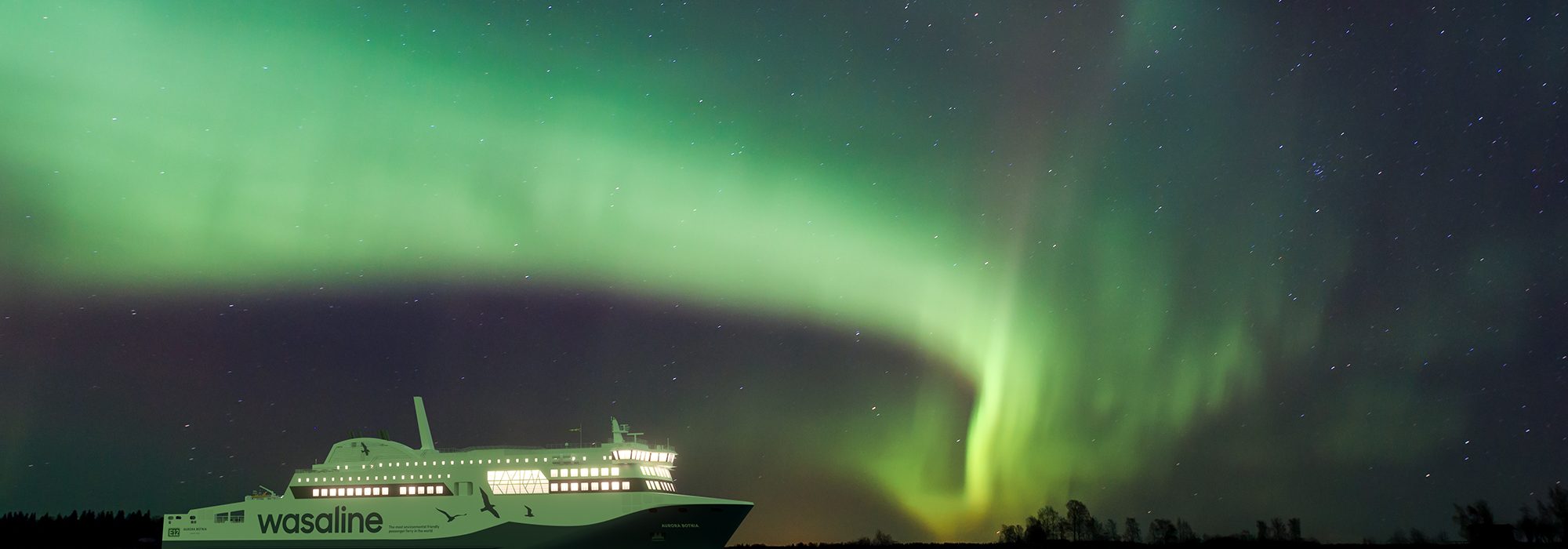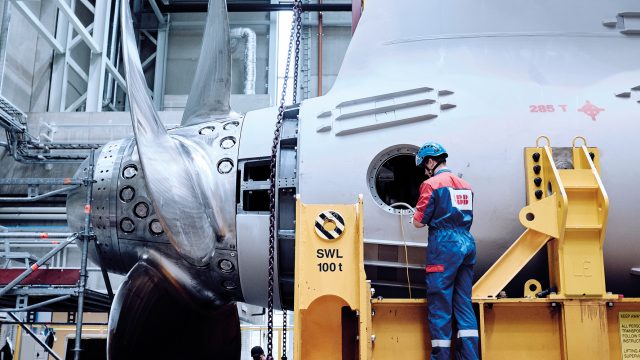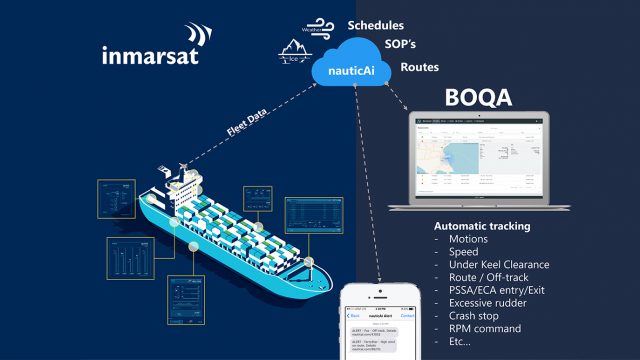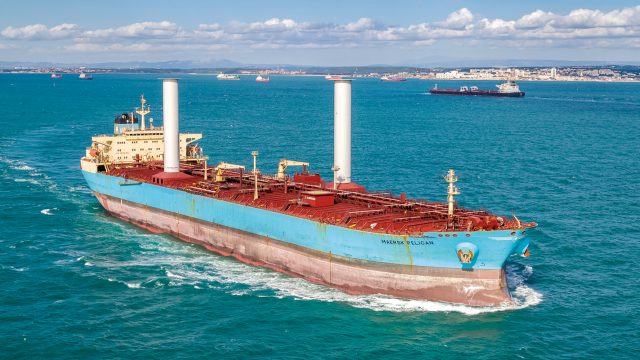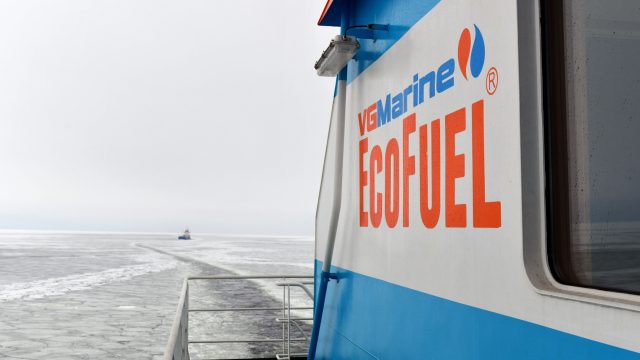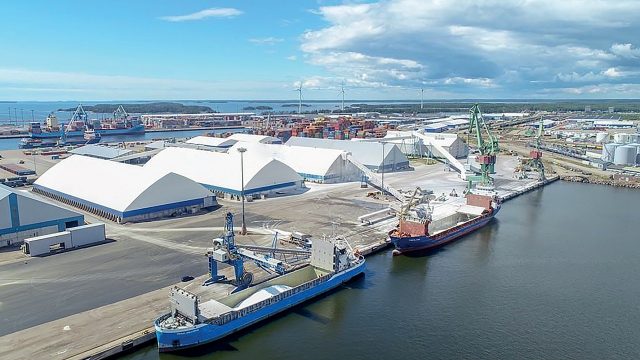From World War II onwards, the shipbuilding industry in Finland has had a somewhat similar history to many other European countries: rapid reconstruction and expansion after the war, later diminishing global market share, mergers, closures and ownership changes, but also innovation and dynamic technology development, very much in cooperation with the local maritime supplier network grown with the yards.
The background of Rauma Marine Construction covers features listed above. In the late 1940s, there were two strong shipyards in the city: the family-owned Hollming Oy and another yard owned by one of the largest industrial conglomerates in Finland at that time, Rauma-Repola Oy. Until the early 1950s, the two yards were busy with the “war reparations” program that covered a
large amount of ship deliveries to the Soviet Union as “compensation for the war lost by Finland”. The positive consequence of the program was that it was followed by solid bilateral trade agreements to the great benefit of both nations – Finland and the Soviet Union. This phase lasted over three decades and, during that period, the yards also had a chance to develop their businesses to serve clients in the West.
Soviet trade diminished and actually deteriorated in the late 1980s, even some years before the Soviet Union collapsed. At that time, the yards were already operating at full speed in the Western market, mainly with specialized products. Hollming and Rauma-Repola merged their shipbuilding businesses in 1991 and formed Finnyards Oy. Later in 1998 Finnyards was sold to the Norwegian company
Aker Maritime, resulting in the name change to Aker Finnyards. Then, in 2004, Aker Finnyards and yards in Helsinki and Turku (which were owned by another Norwegian company, Kvaerner, at the time) merged to form a company that became part of Aker Yards. This meant that all the major yards in Finland were part of one single company.
STX in Korea later acquired Aker Yards in its entirety in 2008, and the new company in Finland was renamed STX Finland and now owned all major yards in Finland, with one in each of the three shipbuilding cities. STX spun off the Helsinki yard to Russian interests, starting the process in 2011, closed the yard in Rauma in 2013 and finally sold the Turku yard to Meyer Werft in Germany in 2014. This resulted in the three yards being totally separate from each other.
A long and rather complex history of over 70 years!
After the closure in 2013, a completely new shipyard was established in Rauma under new ownership, and the operation was started at the existing facility by the same people who had previously run the yard before it closed.
Below is an interview with Jyrki Heinimaa, President and CEO of Rauma Marine Construction. Having started his 23-year career in Finnish shipbuilding in Rauma, Mr. Heinimaa spent a significant amount of time in Turku, and in different positions at the company’s head office, covering all three major yards in the country.
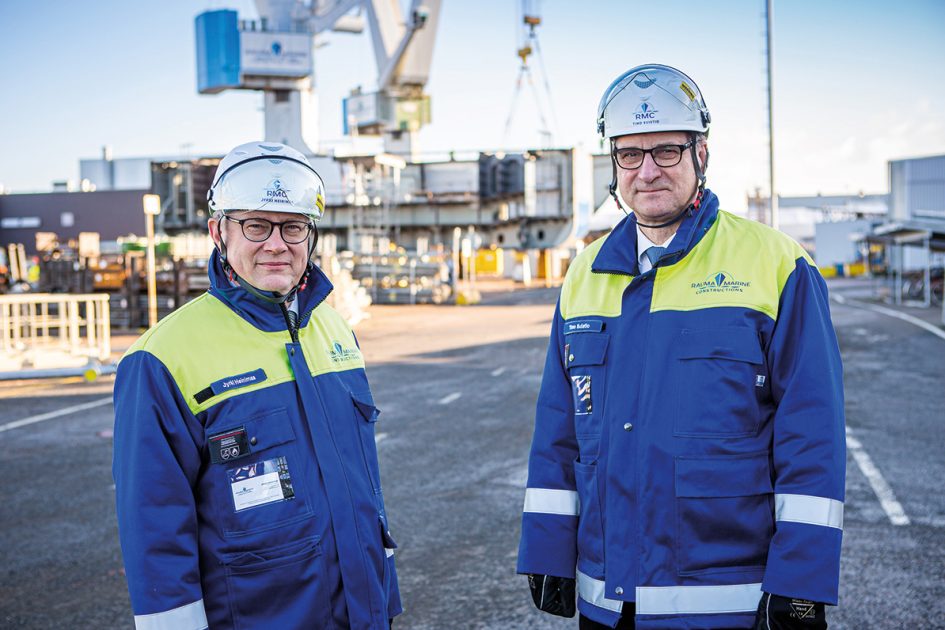
RMC has been in business since 2014. Please summarize the operations and finances of the first six years in a few words?
In the beginning, RMC was a start-up, which required us to make various investments in our operations and productions. The start-up phase of the company lasted until the end of 2018, by which the first successful newbuilding project was delivered to the client. After the new sales in 2019, the company entered a growth phase, due to which our financial earning power has grown, and we have now moved onto profitability.
The company is owned by nine shareholders with different backgrounds and obviously with somewhat different interests. How is that working? Is that a good concept for the long term?
The company was founded by three people, all of whom have an entrepreneurial background. Thus, the company’s operational philosophy is based on entrepreneurship. As our operational activities have grown, we have looked for partners from the investment markets and have selected strong and reliable operators, which brings depth to our stakeholder collective. For this reason, our owner portfolio is excellent for this kind of growing company. Right now, we have a great stakeholder collective for the concept we have. They are strongly committed to the company’s operations long into the future.
The city of Rauma played an instrumental role in supporting the reestablishment of RMC’s operations. Please elaborate on the relationship between both the city and RMC, and the city and the yard’s suppliers.
The city of Rauma bought the docklands and set up the Seaside Industry Park to administer the area for the use of local businesses, for whom this was an opportunity to expand their operations. For RMC, it was a chance to establish a new shipyard. About 30 companies are currently operating in the Seaside Industry Park. In addition to the city, Kongsberg has also invested heavily in the area.
City established a (marine) industrial park. How is that functioning? What are the competitive advantages for RMC and various suppliers?
RMC has those areas at its disposal when needed. There are also other businesses operating within the area. Common costs related to the property are being shared between a larger group of operators.
Seaside Industry Park is responsible for the area’s infrastructure and related services. Many of the companies within our network operate within the industry park, and the synergy it offers benefits everyone.
There is a division of shipbuilding facilities between RMC and the company owned by the city (land, shops, equipment, services, and so on). How is that working out?
The industry park operates much like a hotel – we pay for the facilities based on usage. Some of the main equipment needed in operations, such as welding equipment, are owned by RMC, which is
also responsible for their maintenance. Do you foresee the city having the same role in the long term, or do you anticipate the development towards a more privatized and fully “independent” operation?
The role of the city will remain as it is, due to the nature of the industry park. RMC is a lessee of the industry park and we own some of our main equipment. This arrangement has been agreed upon for a significant period of time.
RMC claims that it has a novel business/operation concept in shipbuilding – “a networking yard”. Please describe the key features and
benefits of that.
The RMC’s operation model has been adapted to correspond with how passenger car ferries and naval vessels are built at Rauma shipyard. The RMC’s network-based mode of operation has been developed from the late 1990s operation mode in a way that further emphasizes a network-based mode of operation. The biggest difference is that RMC has hardly any of its own employees, such as welders. RMC is a project management and technology company and, as such, is responsible for designing, planning, coordinating and commissioning the ship building projects, as well as being responsible for deliveries for clients.
The challenge with network-based operations is that the subcontractor chains grow wider. For this reason, RMC has increased the role of supervision and coordination, and these sectors are still developed further.
Any similar examples in the shipbuilding world?
We have not come across a similar operations model elsewhere in the world. Instead, we are looking for experiences from like-minded partners and docks around the world.
A main slogan is “partnership” with key suppliers. What are the key features of these partnerships? Do these mean truly exclusive and long-term relationships?
Yes, they do. We want to cooperate with such partners that have innovative abilities and know-how.
This can mean, for example, new kinds of technologies or designs the prospective partner has, or it can be found from the partner’s network. The partnership of the future requires you to know how to select the winning team with whom you will negotiate the ship trade.
Competitive well-established innovation capability will lead to long-term, exclusive relationships.
What areas do these long-term relationships cover: design, hull production, machinery and deck outfitting, interior accommodation, services…?
Long-term relationships can cover various sectors of shipbuilding projects, from planning to finalization of the project.
Is it anticipated that the same business concept is applied both to merchant and naval contracts? If not, what are the differences?
Our aim is to build the vessels in the same way, but building naval vessels include aspects that make the operations model a bit different. Merchant and naval vessel suppliers have very different profiles. This is why we apply “one company, two shipyards” thinking, in order to cater to these differing needs.
What are the experiences so far with the “networking yard”?
Network-based operations require strong supervision and presence from the shipyard and further responsibility from suppliers, taking proactive responsibility of their actions. This is constantly
developed further.
RMC has an orderbook of over EUR 1 billion, which is huge for a company with fewer than 150 employees. Please detail the contracts (key technical characteristics – just to have an idea of contract volumes, order of magnitude of price, special features, delivery times, and so on).
The new Wasaline ferry, Aurora Botnia, will accommodate 800 passengers and will have a freight capacity of 1,500 lane meters for cargo and cars. The vessel is designed to be environmentally friendly, with machinery running on a dual fuel solution: besides liquefied natural gas it can also be operated using biogas. The vessel order is approximately EUR 120 million.
The new Tallink MyStar shuttle ferry will be approximately 212 meters long with a gross tonnage of some 50,000 dwt. It will be able to accommodate 2,800 passengers. The ferry will provide over 1,500 man-years of employment for the shipyard. The vessel order is approximately EUR 250 million. Compared to Tallink’s newest shuttle ferry Megastar, which also operates between Helsinki and Tallinn, the new ferry will have an increased passenger area with more seating, as well as more crew cabins.
From a technical standpoint, the ferry will have powerful shore connection equipment and will also be equipped with LNG fuel tanks approximately one third bigger than Megastar. Furthermore, the new enhanced design will allow the ferry’s CO2 emissions to be reduced by 10 per cent.
Four new multipurpose corvettes for the Finnish Navy will be constructed at Rauma shipyard. The design phase will resume with immediate effect and
construction of the first vessel will start at the shipyard in 2022. The Finnish Government approved the procurement, valued at approximately EUR 700 million, September 19, 2019. The multipurpose corvettes will be delivered by 2026 and will be taken into operational use by the Finnish Navy in 2028. The procurement will have a considerable impact on employment, totaling around 3,600 person-years. The work will continue after the delivery as well, through the life-cycle services provided for the vessels.
RMC signed an LoI with TT Line, Australia to build two large ropaxes for the Tasmania operation. The contract, however, did not materialize as the Federal Government of Australia did not authorize funding. Is it likely that the the program will resurface in the near future? If positive, will RMC still be in the picture?
Rauma Marine Constructions (RMC) signed a Memorandum of Understanding on 27 February 2020 with TT-Line Company Pty Ltd. Australia, (TT-Line) to develop, design and construct two large RoRo-Passenger Ferries for their Bass Strait service between Devonport and Geelong. The shipbuilding contract, however, did not materialize because TT-Line was advised by their Shareholder Ministers that the Government would not proceed with the proposed vessel replacement contract due to COVID-19 and its economic implications for the State.
The decision was not a reflection of the quality of the business case developed by TT-Line, nor the ability of RMC to deliver the proposed contracts, but simply a matter of timing and the unprecedented impact of COVID-19. The Tasmanian Government and TT-Line still believe it is essential that the vessels are replaced in coming years to support the growing passenger and
freight transport needs of the state. The Government launched a Taskforce for an investigation, among the other, on possibilities to increase the local content in the RoRo-Passenger Ferries.
RMC has announced its readiness to participate in the vessel replacement program when TT-Line will present such an opportunity.
In your orderbook you have large commercial ferries and quite sizeable naval vessels for the Finnish Defense Force. For the last decades the general trend in shipbuilding has been towards complete segregation of commercial and naval shipbuilding for many reasons. What challenges do you foresee in combining these in your operations?
We build vessels with a dual-shipyard model, and we utilize synergies, but we otherwise respect the differences between the products and do not try to force them into a one mold.
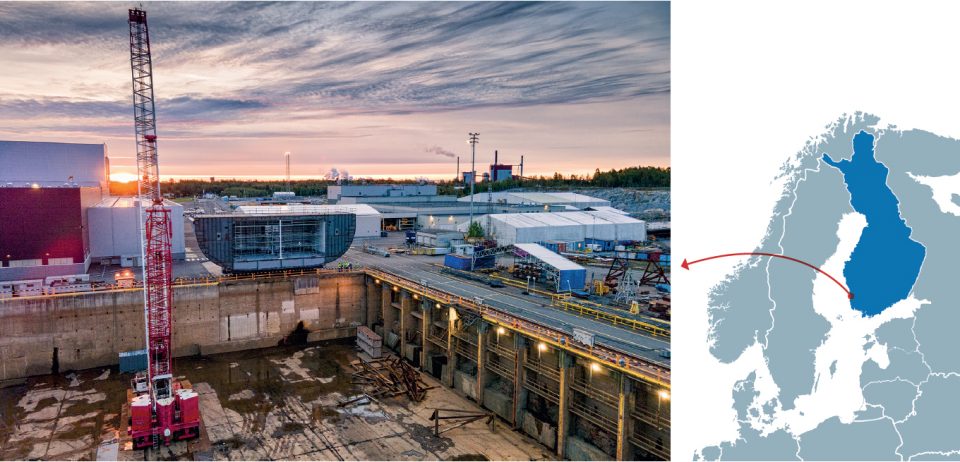
Any specific challenges related to the huge naval program?
Integrating the RMC and SAAB systems into the procurement model that includes the Finnish Defence Forces Logistics Command requires seamless cooperation for it to succeed.
Does the orderbook at hand require additional facility investments? What is the role of the city in these investments?
We will invest in facilities when needed. Whether the investments are carried out primarily by the lessor or the lessee has yet to be decided.
What is the ideal product portfolio of RMC in the future?
Our product portfolio meets the targets we set out in 2018, and we intend to continue on this path, yet we are also looking into other possibilities such as building smaller cruisers, for example.

Shipbuilding in Finland as a whole is experiencing a phase of growth again. There is obviously a major shortage of specialized skills in many subareas. How do you plan to tackle that? What is the position of Rauma versus the other shipbuilding cities, Turku and Helsinki?
The Finnish maritime cluster has a unified vision to develop know-how and networks, as well as create a new shipbuilder generation in Finland. Therefore, we have no intrinsic position versus other shipbuilding cities – we would rather work together and encourage people in the maritime industries to seek coalitions within the whole ship building industry. This then makes the creation of a holistic viewpoint possible.
Do you anticipate the role of non-Finnish labor to further increase in the future?
The know-how that has been accumulated over the centuries-long shipbuilding history across Europe enrichens shipbuilding in Finland. Due to the strong order portfolio, in addition to Finnish experts, we will also need professionals from other countries. Many of the European countries represent the long history of shipbuilding with honor, which enriches the manufacturing.
The three big yards of the country were part of the same company for many years. Now all three are fully separate. Is there the need for cooperation? Do you foresee constructive collaboration with other yards?
We work in cooperation based on commercial grounds, but of course we have common interests in terms of increasing training and growing the know-how as well as the networks. This includes technology-related research and development programs.
The pandemia COVID-19 has had an impact to all manufacturing industries in Finland. Please elaborate how the pandemia has affected the operation of RMC and what the situation is today?
The COVID-19 pandemic have had an impact to the marine industry worldwide. Especially long lead ship-components, which are manufactured in areas that have had lockdown and seizure measures by local Governments due to pandemic, have experienced challenges.
Despite these challenging times, RMC has continued building of ships at Rauma shipyard. Although COVID-19 counter-measures have affected the shipbuilding processes, RMC has been able to avoid lockdowns. RMC sees that this is due to good and early
HSE responses undertaken at shipyard by RMC and its North European shipbuilding partners as well as actions by the Finnish Government. The cumulative net effect of the COVID-19 on the shipbuilding operations worldwide remain open for as long as the pandemic is active.
TEXT EERO MÄKINEN
PHOTOS PUOLUSTUSVOIMAT, RMC AND WASALINE

